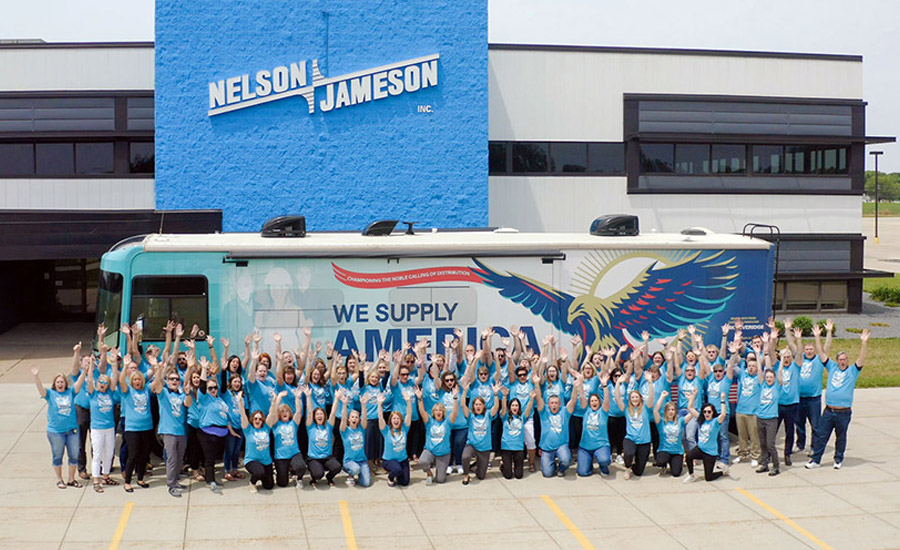The importance of succession planning
Even if the next generation is in place, it’s important for dairy processors to create a plan.

Photo courtesy of phakphum patjangkata / iStock / Getty Images Plus
Although not often covered in the pages of trade magazines, an important topic dairy processors can look at — especially smaller operations — is succession planning. In fact, it has received little national attention during the years, with the exception of HBO’s award-winning series “Succession.”
Of course, when focusing on processing dairy products as a primary goal, thinking about succession planning may not be top of mind. For dairy processors that know the next generation will be in place down the road, part of the equation may be solved.
But succession planning is also about determining a plan for employees throughout the organization. And if a dairy processor does not have a next generation ready to take over someday, the future can get murky.
A recent example is Ohio ice cream shop Loveland Dairy Whip. “After 31 years, Teresa and Rick Morgan have decided to retire and put their business up for sale. Teresa has been involved with the business since 1972 when her parent’s Jim and Marian Flint purchased the business (she was 11). The family-owned business has given two generations of the Flint’s/Morgan’s a place to call home, where they have had many loyal customers and developed many friendships over the years. They will all be missed,” the company wrote on its website in July. “Unfortunately, the next Morgan generation is not interested in carrying on the ice cream tradition.”
Of note, Loveland Dairy Whip stated it is “hopeful a family will be interested in starting their new family tradition by purchasing the Dairy Whip. We will continue to operate until we find a buyer.” According to the Cincinnati Enquirer, the ice cream shop had potential interested buyers and could sell the business by press time, resulting in a fairytale ending. However, a lack of a next generation to take over a business can certainly force a difficult situation.
The University of Washington defines succession planning this way: “Succession planning is the process of identifying the critical positions within your organization and developing action plans for individuals to assume those positions. Taking a holistic view of current and future goals, this type of preparation ensures that you have the right people in the right jobs today and in the years to come.”
Simply stated, “You can’t run a business, regardless of its size, without talented people ready to move into key positions when the current occupants leave,” states employment staffing company Robert Half. “Even the most successful employers can run off a cliff if they don’t have a solid succession plan in place.”
Determining a succession plan involves seven steps, according to Robert Half: Be proactive with a plan, Pinpoint succession candidates, Let them know and explain the stages, Step up professional development efforts, Do a trial run of your succession plan, Integrate your succession plan into your hiring strategy, and Think about your own successor.

In creating a succession plan, the first thing to do is “determine the right skill mix to achieve company goals and determine what gaps need closing,” says Nelson-Jameson President Mike Rindy. Photo courtesy of Nelson-Jameson
To get more insight into best practices of succession planning, Dairy Foods enlisted the help of Mike Rindy, president of Marshfield, Wis.-based Nelson-Jameson Inc. We also turned to Grant Church, president of Fishers, Ind.-based DairyChem, who offers a firsthand perspective after just completing a succession plan.
Steps to take
For any dairy processor hoping to devise a succession plan, the first thing to do is “determine the right skill mix to achieve company goals and determine what gaps need closing,” Rindy suggests. “Identify talented employees and provide education to develop them for future responsibilities.”
If a company does not have a human resources executive, managers need to lead this effort, while seeking input from staff and/or key stakeholders, Rindy adds.
If a dairy processor has no next generation to take over a business — such as the case in the aforementioned ice cream shop example — document critical knowledge and processes in the event that people leave the organization for any reason, Rindy stresses.

Nelson-Jameson President Mike Rindy, right, spoke with Dirk Beveridge of We Supply America during a documentary filming. Photo courtesy of Nelson-Jameson
“Have this accessible to other key individuals in the organization. Identify a ‘back up’ to each position. Always have more than one person who knows how a process works or how to do a critical task so workflow can continue if a person leaves,” he says. “Identify gaps in the hiring process for external candidates coming in so as to make ‘best fit’ hires. [And] identify areas of the organization that are critical to supporting employee retention and work to strengthen or maintain strength of those offerings/attributes.”
An example in action
Founded in 1933, DairyChem specializes in creating natural dairy flavors, dairy concentrates, blends and compound flavors, always innovating to meet its customers’ needs. As mentioned, it just completed its all-important succession plan.
“As a family-owned business, we’ve always approached long-term planning with consistency. This consistency has helped us build lasting partnerships with our customers, providing stability to both new and long-term clients. Working with a company built to last offers significant value,” Church states.
The president of the Indiana company adds that its long-term plan is “crucial for DairyChem's future, keeping us at the forefront of flavor innovation. It ensures we can consistently deliver custom, high-quality flavors while adapting our product offerings and capabilities to meet evolving needs.”
Regarding specifics, key aspects of DairyChem’s succession plan include strategic communication, structured mentorship, and aligning values across generations. “Starting early is a major advantage. We’ve learned that adaptability and continuous learning are essential,” Church reveals. “By integrating innovation and insights from emerging markets, our plan enhances stability and ensures we provide dependable, innovative solutions for our customers.”

Rindy believes a major change employers have made is adapting to employees’ strengths. Photo courtesy of Nelson-Jameson
For any dairy processor on the fence regarding succession planning, Church offers the following advice: “I strongly recommend developing a succession plan. Start early and focus on long-term goals,” he maintains. “A robust plan builds resilience, maintains core values, and ensures consistent, high-quality services. Emphasizing innovation and adaptability while staying family owned helps build lasting customer relationships and drives sustainable growth.”
Biggest pitfalls
While Rindy and Church both clearly recommend devising a succession plan, they note that mistakes can happen. The biggest mistake Rindy has seen is companies not “engaging in open performance development conversations with staff that can sometimes be challenging; where the focus is equally on recognition for successes and strengths as well as ownership for gaps and areas needing improvement,” he states. “To that end, companies need to sufficiently prepare managers to feel confident in having these coaching conversations.”
An important fact about succession plans is companies cannot create one once and leave them alone for years to come. Dairy processors must amend them often based upon a number of factors.
Rindy recommends adjusting succession plans once every six months, if possible. At minimum, succession plans should be adjusted and updated annually.
“From a data perspective, you should be able to track quicker fill rates for open positions, increased amounts of positions being filled by internal staff versus external new hires, and you should expect to see employee retention increase as well,” Rindy maintains. “You will also want to — if possible — track ‘bench strength’ regarding those staff who exhibit a mix of potential and performance encouraging future promotion.”
Tied into succession planning, Rindy notes in a video produced by We Supply America that he makes sure to ask employees what they really want and what they are thinking about in their job and career growth.
“One of the things I believe in, and most employers are adapting to, is focusing on people’s strengths,” Rindy notes during the video documentary. “You can spend hours telling someone [he/she] is not good at something. Or, you can spend a few minutes telling them what they did really well and put them on the bus to really succeed. …It is important to have people try new positions.”
So, what if a dairy processor decides not to create a succession plan? According to Rindy, a potential inability to develop and retain staff effectively are possible fallouts. Companies that decide not to go this route could face “challenges with building ‘bench strength’ by identifying positions key to the company’s success and preparing staff to assume responsibility of those roles for the retention of critical knowledge and the future continued health of the organization,” Rindy concludes.
Looking for a reprint of this article?
From high-res PDFs to custom plaques, order your copy today!









